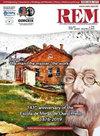使用粒子图像测速(PIV)和散斑模式的悬臂梁变形图
Q3 Earth and Planetary Sciences
引用次数: 6
摘要
PIV(粒子图像测速)在利用粒子运动来监测物体位移或流体流动的研究中得到了广泛的应用,这些研究利用光学技术和二阶统计量的速度矢量来监测物体的位移或流体的流动。当与散斑图案相关联时,PIV也被称为激光散斑测速。一般来说,这种技术已用于涉及流体的工作中,即建立速度矢量图,表示所分析的流动。本文提出了一种方法,通过使用与散斑模式相关的PIV来测量悬臂梁(ASTM A36钢)的变形,这是土木工程中最常用的例子之一,没有引入外部颗粒。结果表明,当载荷为1.96 N时,与散斑模式相关的PIV与解析位移值之间的差值沿光束长度增加,证明了所提出的测量方法的灵敏度。这表明PIV还能够检测与固体力学中的激光散斑图案相关的位移场,从而生成变形图,作为非破坏性测试的附加选项。本文章由计算机程序翻译,如有差异,请以英文原文为准。
Maps of deformations in a cantilever beam using particle image velocimetry (PIV) and speckle patterns
PIV (particle image velocimetry) has been spreading in studies that use the movement of particles to monitor the displacement of an object or the flow of a fluid by means of velocity vectors using optical techniques and second order statistics. PIV is also known as laser speckle velocimetry when associated with speckle patterns. This technique has been used in works involving fluids, in general, building a map of velocity vectors representing the flow under analysis. This paper presents an approach by using PIV associated to speckle patterns for deformation measurements in a cantilever beam (ASTM A36 steel), one of the most common examples used in civil engineering, without the introduction of external particles. Results showed that the difference between PIV associated to speckle patterns and the analytic displacement values is increased along the beam length for a load of 1.96 N as an evidence of sensitivity of the proposed measurement method. This indicates that PIV is also capable for detecting displacement fields associated with laser speckle patterns in solid mechanics generating a map of deformation as an additional option for non-destructive tests.
求助全文
通过发布文献求助,成功后即可免费获取论文全文。
去求助
来源期刊

Rem-Revista Escola De Minas
工程技术-工程:土木
自引率
0.00%
发文量
0
审稿时长
6-12 weeks
期刊介绍:
REM – International Engineering Journal (antigua REM – Revista Escola de Minas) es la primera revista técnica de Sudamérica. Fue fundada en enero de 1936 por los estudiantes de la Escuela de Minas de Ouro Preto y desde entonces se ha especializado en la publicación de artículos en las áreas de la Ingeniería Civil, Geología, Metalurgia y Materiales y, Minería y Mecánica y Energía.
Su objetivo es servir como un medio de publicación para los trabajos técnicos y científicos originales de investigadores nacionales y extranjeros en esas áreas. Contribuciones originales (artículos y cartas) son aceptadas. Artículos de revisión dependen de la invitación y/o análisis de los Editores.
El envío de artículos para su publicación implica que el trabajo no ha sido publicado previamente, que no está siendo presentado para su publicación en otra revista y no se publicará en otro lugar, en la misma forma, sin el permiso, por escrito, de los Editores/Autores.
 求助内容:
求助内容: 应助结果提醒方式:
应助结果提醒方式:


